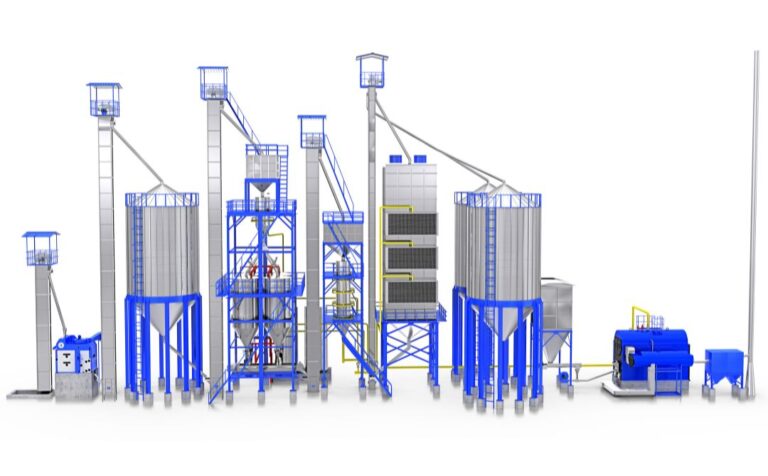Table of Contents
India cultivates a global legacy as the world’s largest rice exporter, shipping 24.5 million tonnes in 2024-25. Parboiled rice, with its rich nutrition and robust texture, drives 7-8 million tonnes of this trade, fueling demand in markets like Nigeria, Saudi Arabia, and Bangladesh.
For entrepreneurs, millers, and traders, exporting parboiled rice from India opens doors to profits of ₹50 lakh-₹5 crore annually. Navigating the parboiled rice export process requires strategic planning, compliance, and market insight to connect with Indian rice exporters and global buyers.
This blog provides a step-by-step guide to export parboiled rice from India, explores the best markets for Indian parboiled rice exports, and outlines practical steps to launch a successful rice export venture with SKF Elixer’s advanced processing solutions.
The Global Appeal of Indian Parboiled Rice
India’s rice exports, valued at ₹83,000 crore in 2024-25, thrive on the unique qualities of parboiled rice that has longer shelf life (18-24 months), enhanced nutrition (90-95% vitamin retention), and firm texture. However, exporters face challenges like export duties, stringent quality standards, and logistics costs.
Effective rice trading strategies can secure contracts worth ₹1-10 crore while saving ₹50,000-₹2 lakh per 100 tonnes through efficient processing. By mastering the parboiled rice export process, parboiled rice suppliers tap into global demand, ensuring compliance with international standards. Let’s explore how to start a parboiled rice export business and capitalize on India’s rice export dominance.
Understanding the Parboiled Rice Export Process
The parboiled rice export process involves several stages to ensure quality and compliance:
- Sourcing and Processing: Procure high-quality paddy and parboil using soaking (6-12 hours), steaming (20-30 minutes), and drying (12-14% moisture) to achieve 70-75% head rice yield.
- Quality Assurance: Test for pesticide residues (<0.01 mg/kg) and grain quality (70% head rice), meeting FSSAI and ISO standards.
- Packaging: Use 25-50 kg jute or PP bags, ensuring moisture-proof storage.
- Logistics: Arrange shipping via freight forwarders to ports like Mundra or Chennai.
- Export Clearance: Secure permits and comply with customs.
Best markets for Indian parboiled rice exports include
- Africa: Benin, Nigeria, and Cote d’Ivoire import 2-3 million tonnes yearly, valuing durability for local cuisines.
- Middle East: Saudi Arabia and UAE demand 1-2 million tonnes of Basmati parboiled rice.
- South Asia: Bangladesh imports 1 million tonnes of non-Basmati parboiled rice for affordability.
- Europe/USA: Growing demand for organic parboiled rice, importing 500,000 tonnes.
Documentation needed for rice export from India ensures compliance
- Export License: Obtain IEC (Importer Exporter Code) from DGFT.
- Quality Certificates: FSSAI, ISO, or APEDA certifications for pesticide and quality compliance.
- Bill of Lading: Shipping document.
- Commercial Invoice and Packing List: Details quantity and value.
- Phytosanitary Certificate: Ensures pest-free rice.
- Customs Declaration: Covers 10% export duty.
Legal requirements for exporting rice from India include
- DGFT Compliance: Adhere to export policies, including duty payments.
- APEDA Registration: Mandatory for agricultural exports.
- Customs Clearance: Submit documents at ports.
Challenges and Solutions
How to start a parboiled rice export business faces hurdles:
- Export Duties: 10% duty adds ₹3,000-₹5,000/tonne, reducing margins.
- Solution: Target duty-free markets or apply for MEIS rebates.
- Quality Compliance: Stringent standards risk rejections.
- Solution: Invest in testing labs for parboiled rice quality.
- Logistics Costs: Shipping costs ₹5,000-₹20,000/tonne.
- Solution: Partner with freight forwarders for bulk discounts.
- Market Access: Finding reliable buyers is challenging.
- Solution: Join B2B platforms.
Step-by-step guide to export parboiled rice from India
- Market Research: Identify demand in Africa, Middle East.
- Secure Certifications: Obtain IEC, FSSAI, ISO for legal requirements for exporting rice from India.
- Set Up Processing: Invest in parboiling plant for 70-75% yield.
- Budget: Plan ₹10-100 lakh for setup, ₹1-5 lakh yearly maintenance, ₹5,000-₹20,000 per shipment for logistics.
- Join B2B Platforms: List on Tradologie or IndiaMART for buyer leads.
- Negotiate Contracts: Offer samples and 5-10% discounts for bulk orders.
Conclusion
Exporting parboiled rice from India is a lucrative opportunity, with Indian rice exporters meeting global demand through efficient parboiled rice suppliers. By navigating legal requirements for exporting rice from India and leveraging B2B platforms, exporters secure ₹1-10 crore contracts.
SKF Elixer India Pvt. Ltd. offers advanced parboiled rice production plants, ensuring 70-75% head rice yield and CPCB-compliant wastewater management. Contact SKF Elixer today to streamline your rice export from India and thrive in the global rice trading market.
FAQs
-
What is the step-by-step guide to export parboiled rice from India?
Exporting parboiled rice from India requires careful planning and adherence to trade regulations. Here’s a step-by-step guide:
Research International Markets – Identify key demand regions such as Africa, Middle East, and South Asia, where parboiled rice is a staple.
Set Up or Source from a Parboiled Rice Processing Plant – Ensure you have a reliable supply chain that meets global quality standards.
Secure Export Certifications and Licenses – Obtain APEDA registration, FSSAI approval, IEC (Import Export Code), and relevant phytosanitary certificates.
Join B2B Export Platforms – List your products on platforms like Alibaba, TradeIndia, IndiaMART, or government-backed portals to find global buyers.
Build Buyer Relationships & Negotiate Contracts – Approach international rice importers, wholesalers, and distributors to finalize supply agreements.
Logistics & Shipping – Partner with trusted freight forwarders and ensure proper packaging, labeling, and timely delivery.
By following these steps, Indian rice exporters can successfully tap into the growing global demand for parboiled rice while maintaining compliance and profitability.
-
How do you start a parboiled rice export business?
To start a parboiled rice export business, you first need to research international markets to identify high-demand regions such as Africa, the Middle East, and South Asia. Next, invest in a reliable parboiled rice processing plant or partner with trusted suppliers to ensure consistent quality and supply.
Securing the necessary export licenses and certifications such as APEDA registration, FSSAI approval, and phytosanitary certificates—is essential to meet global trade standards. Once compliance is in place, you can list your products on B2B export platforms like TradeIndia, Alibaba, or government-backed portals to connect with international buyers.
Building strong relationships with rice importers and distributors will further strengthen your market presence.
-
What are the best markets for Indian parboiled rice exports?
Indian parboiled rice meets it's international market demand due to its high nutritional value, long shelf life, and versatile use in traditional cuisines. The best markets for Indian parboiled rice exports include African countries such as Benin, Nigeria, and Senegal, where parboiled rice is a dietary staple. In the Middle East, countries like Saudi Arabia, UAE, and Kuwait import large volumes for both household consumption and the food service industry.
Additionally, South Asian countries like Bangladesh, Sri Lanka, and Nepal rely on Indian rice exports to meet growing demand. With rising global consumption, these regions continue to be the most profitable and reliable destinations for Indian parboiled rice exporters.
Good reads are meant to be shared









